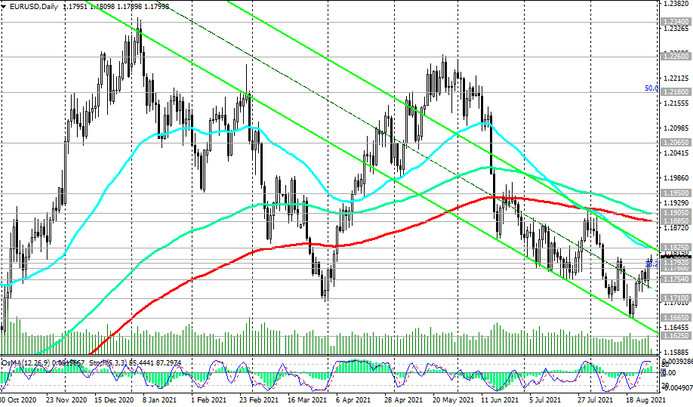The new trading week, which is transitional between the coming end of August and the beginning of September and autumn, began with a flat in the financial markets. Major US stock indexes and DXY dollar futures have been in tight ranges since opening today.
Trading volumes are reduced, including due to the "Summer Bank Holiday" in the UK and the Commonwealth countries. During today's American trading session, the publication of important macro statistics is not planned, which is likely to also contribute to the continued low activity of traders. However, volatility may rise slightly at 12:00 (GMT), when the preliminary harmonized consumer price index (HICP) in Germany for August is released.
According to the forecast, the indicator is expected to grow by+ 3.4% (against +3.1% in July, +2.1% in June, +2.4% in May, +2.1% in April, +2.0% in March, +1.6% in January and February, -0.7% in December and negative values in the second half of 2020) in annual terms. The data suggests increasing inflationary pressures in Germany, which are likely to help strengthen the euro during this time frame.
Market participants also continue to assess the results of last week's economic symposium in Jackson Hole, during which Fed Chairman Jerome Powell confirmed that the central bank has plans to move to phasing out stimulus policy later this year, although Powell's speech did not contain a clear signal about the timing of the beginning of such a curtailment.
"If the economy as a whole is recovering in line with expectations, it may be appropriate to start slowing down" asset purchases (on which the Fed spends $ 120 billion a month) as early as this year, Powell said.
However, the current Fed policy is “well-tuned”, according to Powell, and the threat to the economy from the continued spread of the coronavirus is forcing the Fed leadership to take a wait and see attitude. Fed executives “are ready to adjust it (policy) as appropriate to achieve our goals”, Powell also said, however, market participants suggested that no change in Fed policy should be expected before its November meeting.
Therefore, it can be assumed that before this meeting and in the absence of new unexpected statements from the leaders of the FRS, the dollar will be guided by macroeconomic statistics coming from the United States. Strong macro data will contribute to the strengthening of the dollar, and weak, accordingly, its fall.
In this regard, investors will carefully study the ISM reports of the latest PMI data for the US manufacturing and services sector, which will be published on Wednesday and Friday. However, the focus of the financial market participants will be the publication on Friday (at 12:30 GMT) of the monthly data from the US labor market. Outside the US agricultural sector, 665,000 new jobs are expected to be created in August, while unemployment fell another 0.2% to 5.2%. These are encouraging indicators, suggesting that the US labor market continues to improve after its crash in the first half of 2020 and is gradually approaching pre-coronavirus levels. Labor market data, along with data on GDP and inflation, are key for the Fed in deciding the outlook for monetary policy. If they are confirmed or turn out to be better than the forecast, then talk about the imminent start of curtailing the Fed's stimulating policy will intensify, and the dollar will strengthen.
Returning to the euro and the EUR / USD pair, they reacted rather sluggishly to the publication at the beginning of today's European session of the European Commission report, according to which the indicator of economic sentiment, reflecting the confidence of companies and consumers, in August fell to 117.5 (against a record high of 119.0 in July and forecast 117.9). Despite the decline, the index remains at a high level, the European Commission noted. According to other data from the European Commission, the employment expectations indicator continued to rise, reaching its highest level since November 2018, thanks to increased optimism in the construction, retail and services sectors. Manufacturing employment plans remained largely unchanged and remained very high, just short of the all-time high in December 2017. In general, this report and comments from the European Commission can be called optimistic, and if the resistance level 1.1800 is broken, further growth of EUR / USD should be expected.
If the data on the US labor market expected on Friday turns out to be significantly worse than the forecast, then the prospect of tightening the FRS monetary policy may be postponed to a later date, and this is a negative factor for the dollar. In this case, the growth of EUR / USD may accelerate in the direction 1.1885, 1.1905 marks (see Technical Analysis and Trading Recommendations).






